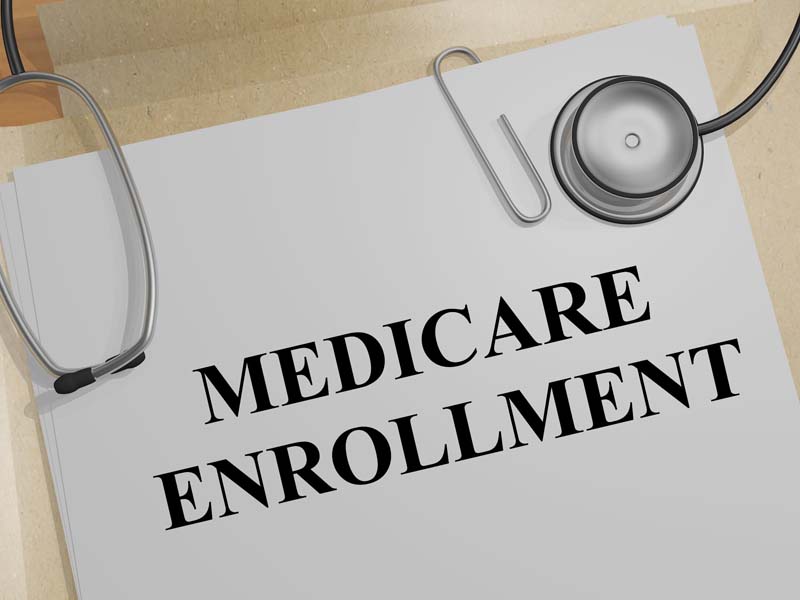
Proposed Medicare Rule Includes Potential Wins for FPs
Eligibility Updates and Streamlining Would Benefit Patients, Practices
July 7, 2022, 5:05 p.m. News Staff — The Academy recently expressed support for a proposed rule that would reduce administrative complexity for primary care physicians, simplify Medicare enrollment and increase access to comprehensive care for family medicine patients.

“By eliminating unnecessary delays between when a beneficiary enrolls and their coverage becomes effective, this proposal will reduce care delays and ultimately improve beneficiaries’ health,” said the AAFP’s June 24 letter. “We urge CMS to finalize this proposal.”
The letter was sent to CMS Administrator Chiquita Brooks-LaSure, in response to a proposed rule titled “Implementing Certain Provisions of the Consolidated Appropriations Act, 2021 and Other Revisions to Medicare Enrollment and Eligibility Rules,” published April 27 in the Federal Register. It was signed by AAFP Board Chair Ada Stewart, M.D., of Columbia, S.C.
The letter echoed detailed guidance the Academy sent federal regulators last month calling for the public health emergency (set to expire in mid-July) to continue through at least the end of 2022, partly to enable regulators to finalize and implement the Medicare enrollment protections and improvements proposed in this rule. It also complemented a letter the AAFP sent CMS in April, outlining steps the agency should take to ensure continuous Medicaid coverage and strengthen the health care safety net while moving toward better payment, mental health parity and administrative simplification.
Story Highlights
Improving Continuous Coverage
Medicare Part B today imposes on some beneficiaries a lag of as long as six months between enrollment and access to benefits. The proposed rule would narrow this gap by allowing coverage for newly eligible individuals to begin on the first day of the month following the month in which they enroll (either during the last three months of their initial enrollment period or during a given year’s general enrollment period, Jan. 1 to March 31).
The rule also would establish special enrollment periods for exceptional conditions for patients who miss their designated enrollment openings, and exempt beneficiaries who enroll in Medicare Part A or B during such an SEP from the lifetime 10% premium increase that now accompanies late enrollment.
In line with the Academy’s advocacy, one such SEP would be triggered by a patient’s loss of Medicaid eligibility at the end of the COVID-19 public health emergency or January 1, 2023, whichever is sooner. The other exceptional conditions named in the proposed rule are
- federally, state- or locally declared emergencies or disasters;
- misrepresented or incorrect information in an employer-sponsored health care plan;
- release from incarceration; and
- “circumstances out of control” designations granted by CMS and the Social Security Administration on a case-by-case basis.
“The AAFP supports the addition of these SEPs and the accompanying language to exempt SEP enrollees from late enrollment penalties,” the letter said. “The AAFP has long advocated for eligibility and enrollment policies that facilitate continuous, comprehensive coverage. For example, we’ve previously supported continuous coverage policies for formerly incarcerated individuals and are pleased CMS has proposed an SEP for this population.”
Responding to the proposed rule’s requirement that some SEP applicants provide detailed proof of their circumstances, the Academy urged CMS to “use existing data resources to automatically apply these SEPs for individuals who are able to provide basic documentation with their enrollment materials.”
“For example, CMS should work with the Federal Emergency Management Agency, the Department of Justice, state Medicaid agencies, and other relevant stakeholders to obtain contact information for those who are losing health coverage due to justice involvement, Medicaid terminations or a disaster,” the letter said.
“Additionally, for many of these populations, contact via mail may not be appropriate or effective. The AAFP strongly encourages CMS to implement alternative methods for contacting individuals about the SEP.”
The Academy also urged CMS to reconsider the proposed rule’s exclusion from the new SEPs individuals who have lost Medicare coverage for failure to pay premiums. The letter suggested that the agency add this exception to the list and allow two SEP uses per beneficiary.
Increasing Administrative Simplification
The Academy voiced approval for the proposed rule’s cap for retroactive Medicare Part B premium liabilities that burden physicians and add financial pressure to their practices.
The rule would cap at 36 months the full-benefit dual eligibility for Medicare and Medicaid beneficiaries, limiting the time for which a state is liable for premiums and can try to recoup funds. States now pay for the cost of Medicare Part B premiums for millions of low-income individuals who are eligible for both Medicare and Medicaid and are sometimes liable for years of retroactive Medicare Part B premiums for patients whose disability determinations have been delayed.
“When this occurs, states will often move to recoup Medicaid payments from physicians, other clinicians and facilities because Medicare is the primary payer for dual eligible beneficiaries,” the Academy said. “This process results in administrative burden for physicians, who have to undergo a special filing process in order to submit Medicare claims for services that occurred more than one year prior to filing the claim.
“The AAFP supports this proposal and thanks CMS for taking action to reduce administrative burdens while also ensuring continuous, affordable access to care for beneficiaries.”